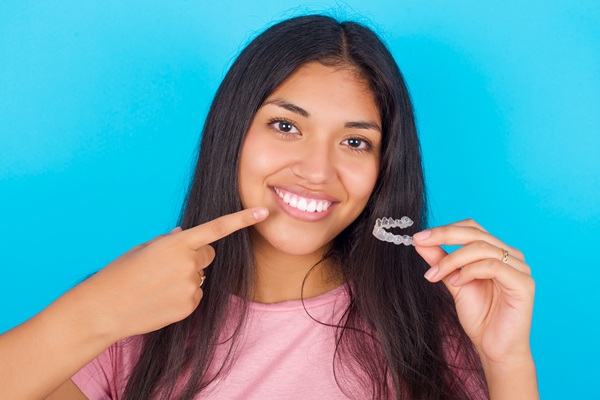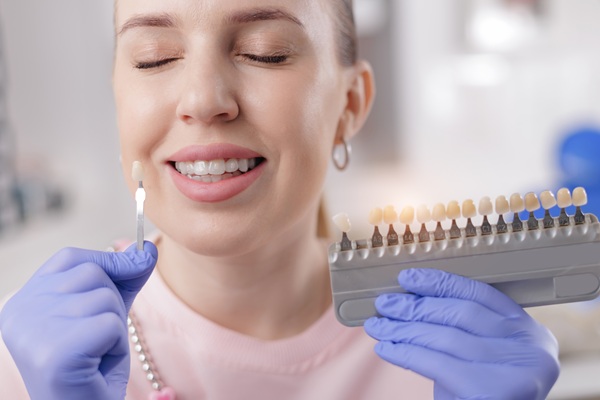Does Invisalign® Fall Under Orthodontics?

Orthodontics is a branch of dentistry that focuses on teeth straightening options such as Invisalign®. However, because having straight teeth is so important to oral health, many types of dentists offer orthodontic services, including general dentists. Read on to learn more about the benefits of Invisalign.
Does Invisalign treatment fall under orthodontics?
Like other clear aligners, Invisalign falls under the category of orthodontic treatment, even though it is a service that can be offered by general dentists. Not only can having a person's teeth straightened with Invisalign improve confidence in their smile but also it can aid oral hygiene and even chewing and speaking functions. Also, correcting the alignment of teeth in some cases can reduce jaw pain and headaches. General dentists are well aware of the many benefits teeth straightening with Invisalign can offer. Therefore, they want to provide this option for their patients.
Invisalign benefits
The list below includes some of the more popular benefits that one can expect to receive when choosing Invisalign clear aligners as their orthodontic treatment option.
Invisalign aligner trays are custom-made.
Invisalign clear aligner trays are custom-made for each patient. This means every patient will benefit from getting the personalized teeth-straightening treatment they need for good oral health. It also means that they can expect to undergo a more comfortable teeth-straightening process due to the custom fit of clear aligners, as generic aligners simply do not offer the same type of custom treatment.
Invisalign aligners are barely visible.
Because Invisalign clear aligners are barely noticeable when they are being worn, many people who want to be more discreet about straightening their teeth are choosing this teeth-straightening option. These nearly invisible aligners are popular among both teenagers and older adults who do not want to wear traditional braces.
Invisalign clear aligners are easy to care for
Everyone who chooses Invisalign to straighten their teeth will be given care instructions for their new aligners. These instructions must be carefully followed in order for wearers to experience ideal results. Examples of care instructions may include:
- Cleaning the trays properly
- Brushing and flossing after eating
- Rinsing the trays thoroughly after drinking something that can stain, such as wine or coffee
Invisalign clear aligners are removable
Those who choose Invisalign as their form of orthodontic treatment have the option of removing them for two to four hours every day. Wearers can choose to remove them whenever they want, allowing them the versatility they need when performing their everyday functions. The ability to remove the aligners is helpful for meal times and when a more polished appearance is needed during a special event. However, Invisalign patients are advised to wear their aligners for no fewer than 22 hours so as not to risk impeding their effectiveness.
Is orthodontics in your near future?
Many dental patients are looking into their teeth straightening options and Invisalign is one of the more popular options. Because Invisalign treatment depends on each individual's situation, they will need to make a consultation appointment for a personalized treatment plan.
Request an appointment here: https://www.yourhuntsvilledentist.com or call René A. Talbot, DDS at (256) 382-6690 for an appointment in our Huntsville office.
Check out what others are saying about our dental services on Yelp: Orthodontics in Huntsville, AL.
Recent Posts
Dental veneers can improve the shape, color, or symmetry of the smile in a way that looks natural. These thin restorations are bonded to the front of the teeth to enhance appearance while maintaining a natural feel. Available in both composite and porcelain materials, veneers are selected based on aesthetic goals, treatment timeline, and lifestyle.Composite…
Choosing the right dental office is essential for maintaining good oral health and ensuring a positive dental experience. When visiting a new dental office, it is important to ask the right questions to ensure the practice meets your specific needs and expectations. Whether you are new to the area or simply seeking a change, asking…
Whether you are about to book an appointment for tooth implants or you have just undergone the procedure, you probably want to learn proper aftercare to ensure healing and recovery. One of the questions that patients often ask is what and what not to eat after surgery. Although placing implants ensures that you have dental…
An implant dentist uses artificial tooth roots to anchor a restoration for a lost tooth or teeth. By replacing the lost tooth roots, dental implants provide you the strength and stability needed to chew food and perform other oral functions. Also, they help to stimulate and preserve jawbone structure, stopping bone loss, and maintaining facial…


